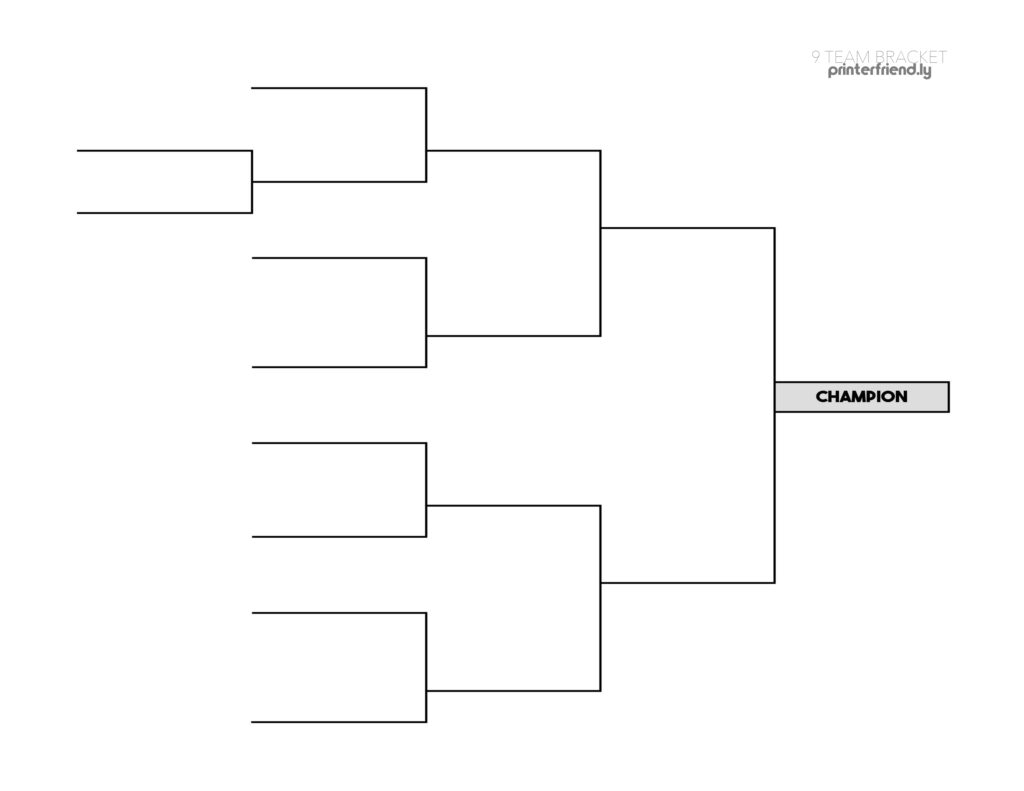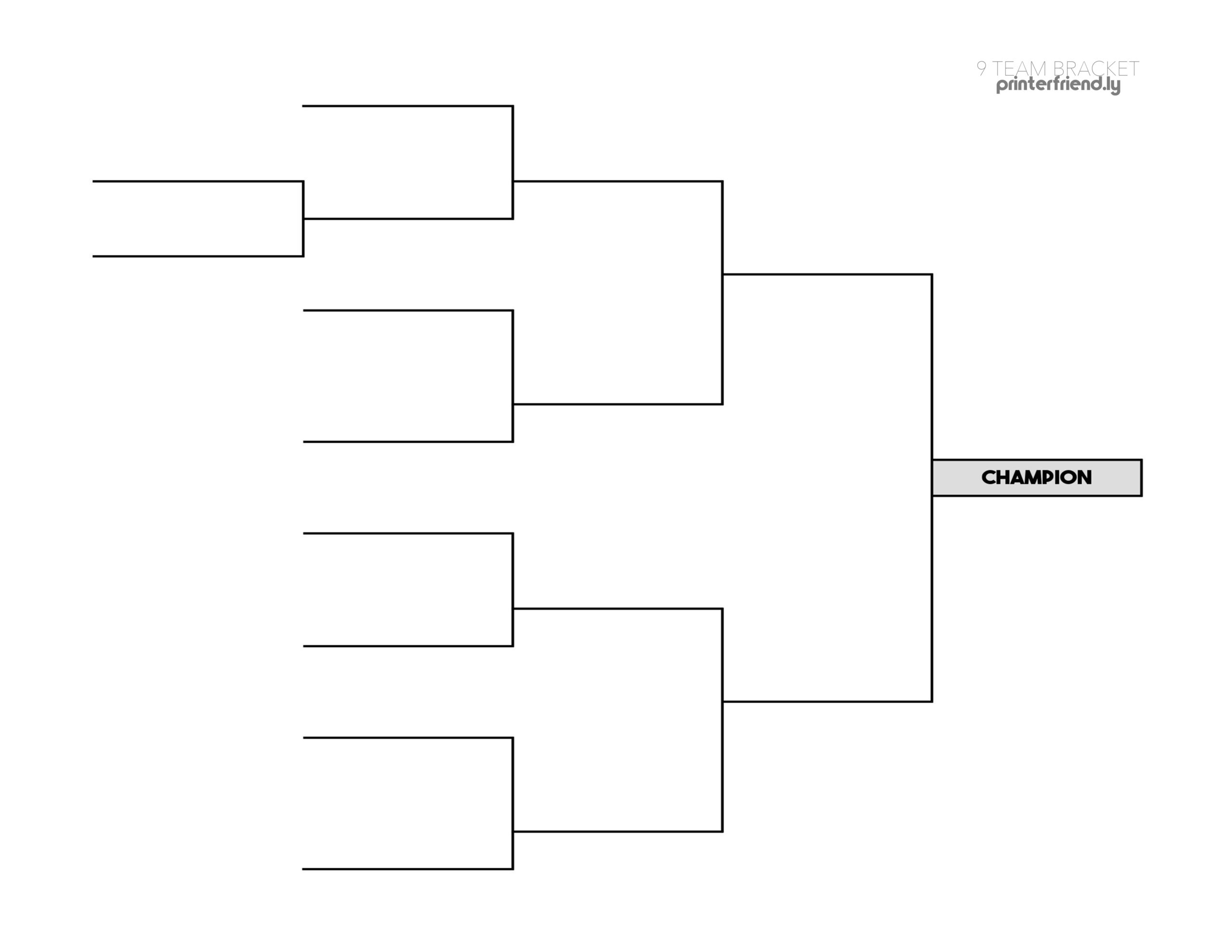
Decoding the Tournament Bracket: A Comprehensive Guide
The tournament bracket, a staple of competitive events ranging from sports to esports, and even academic competitions, is more than just a visual representation of matchups. It’s a strategic roadmap, a predictor (albeit often inaccurate) of potential outcomes, and a source of endless fascination for participants and spectators alike. Understanding the intricacies of a tournament bracket is crucial for anyone involved in organizing, participating in, or simply enjoying these events. This comprehensive guide will delve into the various types of tournament brackets, how they work, and their significance in competitive landscapes.
What is a Tournament Bracket?
At its core, a tournament bracket is a diagram that illustrates the series of games or matches played during a tournament. It visually maps out which competitors will face each other and the potential path each competitor must take to reach the final round and ultimately win the championship. The structure of a tournament bracket is determined by the number of participants and the tournament format.
The most common type of tournament bracket is the single-elimination bracket, but variations like double-elimination, round-robin, and others exist, each with its own set of rules and advantages. The layout of a tournament bracket is designed to systematically narrow down the field of competitors until a single winner remains.
Types of Tournament Brackets
Single-Elimination Bracket
The single-elimination bracket, also known as a knockout bracket, is the most straightforward and widely used format. In this type of tournament bracket, a single loss eliminates a competitor from the tournament. This format is efficient in determining a winner quickly, making it suitable for events with a large number of participants or limited time constraints. However, it can be unforgiving, as a single off day can lead to elimination, regardless of a team’s overall strength.
The structure of a single-elimination tournament bracket typically features a power of two number of participants (e.g., 4, 8, 16, 32, 64). If the number of participants is not a power of two, byes are often used. A bye allows a competitor to advance to the next round without playing a match. These byes are usually awarded to the highest-ranked competitors.
Double-Elimination Bracket
The double-elimination tournament bracket provides a second chance for competitors who lose a match. Participants are divided into two brackets: the winners’ bracket and the losers’ bracket (also known as the consolation bracket). A loss in the winners’ bracket moves a competitor to the losers’ bracket. A loss in the losers’ bracket results in elimination from the tournament. The winner of the winners’ bracket faces the winner of the losers’ bracket in the final.
The double-elimination format is considered fairer than single-elimination because it allows for a single bad performance without immediate elimination. It also ensures that the eventual winner has proven their mettle against a broader range of competitors. These tournament brackets are more complex to manage and often require more time to complete.
Round-Robin Tournament Bracket
In a round-robin tournament, each competitor faces every other competitor once (or sometimes twice, in a double round-robin). While the results can be displayed in a tournament bracket-like format to visualize the standings, it’s more accurately represented as a schedule of matches. The competitor with the best record at the end of the round-robin is declared the winner. Round-robin tournaments are excellent for determining overall strength and minimizing the impact of luck. They are often used in leagues and qualifying rounds.
Other Bracket Variations
There are other, less common, tournament bracket variations, such as multi-stage tournaments that combine different formats (e.g., a round-robin group stage followed by a single-elimination bracket). These hybrid formats are designed to leverage the strengths of different bracket types to create a more balanced and competitive environment.
Creating and Reading a Tournament Bracket
Creating a tournament bracket involves several steps. First, determine the number of participants and the chosen tournament format. Next, draw the initial bracket structure, ensuring that the number of slots corresponds to the number of participants (or a power of two, if using byes). Assign competitors to their initial positions, typically based on seeding or random draw. As matches are completed, update the bracket to reflect the results and the advancement of winners.
Reading a tournament bracket is relatively straightforward. Follow the lines connecting competitors to see who is facing whom. The winners of each match advance along the lines to the next round. In double-elimination brackets, pay attention to which bracket (winners’ or losers’) a competitor is in. The final match determines the overall champion.
The Significance of Seeding
Seeding is the process of ranking competitors before the tournament begins. The purpose of seeding is to prevent the strongest competitors from facing each other in the early rounds. This helps to ensure that the later rounds feature the most competitive and exciting matchups. Seeding is typically based on past performance, rankings, or other relevant metrics. A well-seeded tournament bracket can significantly impact the fairness and competitiveness of the tournament.
Tournament Bracket Generators and Software
Creating and managing a tournament bracket manually can be cumbersome, especially for large tournaments. Fortunately, numerous online tournament bracket generators and software solutions are available. These tools automate the bracket creation process, allow for easy updating of results, and often provide additional features such as scheduling, reporting, and integration with live streaming platforms.
The Psychology of Tournament Brackets
Tournament brackets are not just logistical tools; they also have a psychological impact on participants and spectators. The visual representation of the path to victory can motivate competitors and create a sense of anticipation. Spectators often engage in bracketology, the practice of predicting the outcome of a tournament by filling out a tournament bracket. This adds an element of fun and engagement to the event.
For competitors, seeing their potential opponents and the challenges they face can be both motivating and intimidating. Understanding the tournament bracket and strategizing accordingly is a crucial aspect of tournament preparation.
Tournament Brackets in Different Contexts
Tournament brackets are used in a wide variety of contexts, including:
- Sports (e.g., basketball, tennis, soccer, esports)
- Academic competitions (e.g., debate tournaments, science bowls)
- Gaming tournaments
- Even internal company competitions and hackathons
The specific rules and regulations governing the use of tournament brackets may vary depending on the context, but the fundamental principles remain the same: to provide a fair and structured framework for competition.
The Future of Tournament Brackets
As technology continues to evolve, tournament brackets are likely to become even more sophisticated. We can expect to see more interactive and dynamic brackets that provide real-time updates, data analytics, and personalized experiences for participants and spectators. The integration of artificial intelligence and machine learning could also lead to more accurate seeding and prediction models, further enhancing the fairness and excitement of tournaments.
The humble tournament bracket, a simple yet powerful tool, will continue to play a vital role in shaping the competitive landscape for years to come. Its ability to organize, visualize, and add drama to competitive events makes it an indispensable part of the world of sports, academics, and beyond. Understanding the nuances of different tournament brackets empowers both participants and viewers, enhancing their experience and appreciation for the spirit of competition. [See also: Creating Engaging Tournament Schedules] Whether you’re a seasoned competitor or a casual fan, grasping the fundamentals of the tournament bracket is essential for navigating and enjoying the world of competitive events.
